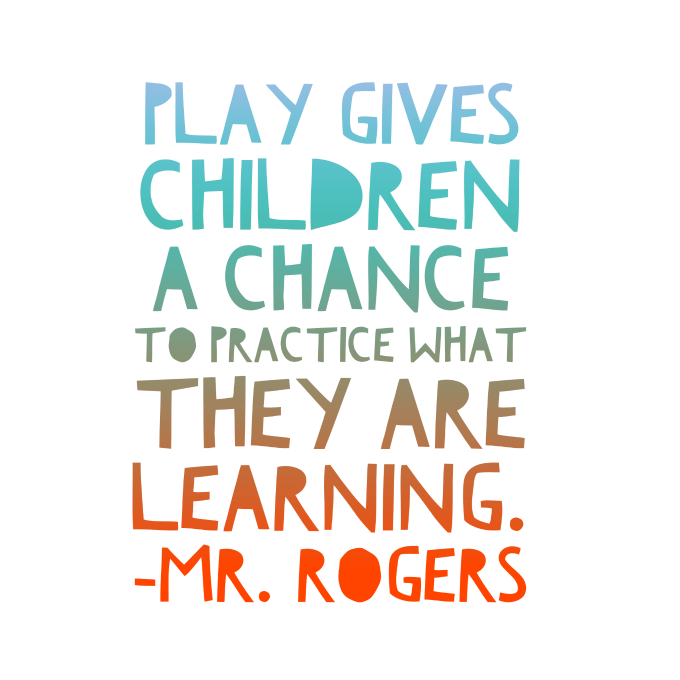
Fultonvale's Kindergarten program is devoted to learning through play. The program is developed to promote play through a thoughtfully designed environment and a variety of engaging learning opportunities.
Arolynn Kitson

I Know it's PLAY when....
learning is self-chosen and self-directed
children engage in imaginative thinking and communication
children are intrinsically motivated
children's learning is guided by self selected rules, but the rules leave room for creativity
learning is conducted in an alert, active but relatively non-stressed frame of mind
adopted source: Peter Gray (2013) Scholarpedia,8970:30578
12 Types of Play
Arts Play , Construction Play
Language Play , Large Motor Play
Make-Believe Play , Mastery Play
Rough and Tumble Play , Risk-Taking Play
Rules-Based Play , Sensory Play
Small Motor Play , Symbolic Play
Arts Play
Arts Play promotes: creativity, self-esteem, fine motor growth, mathematical reasoning, spatial awareness and independence.
Through exploration children convey ideas and feelings
Through dance, music, visual arts or dramatic play, children use open ended materials and other media to draw, model, create music or perform. Children often experiment with arts play as a way to explore and learn using body movement, role-playing, acting and vocal or visual interpretation. Children can also use music or art media to convey their ideas or feelings by expressing them through body movement, vocal, dramatic or visual representations.
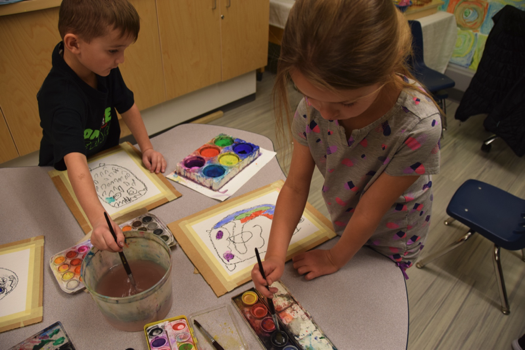
Construction Play
Construction play promotes:
creativity, large and small motor growth, perseverance, self-regulatory abilities, metacognitive thinking, oral language, cooperation, problem-solving abilities.
When children build or take things apart, they engage in construction play. They do so to learn how things work and to repurpose everyday objects for other types of play. Building forts, cars and imaginary or real-world objects provides a means for children to make meaningful connections to how things work.
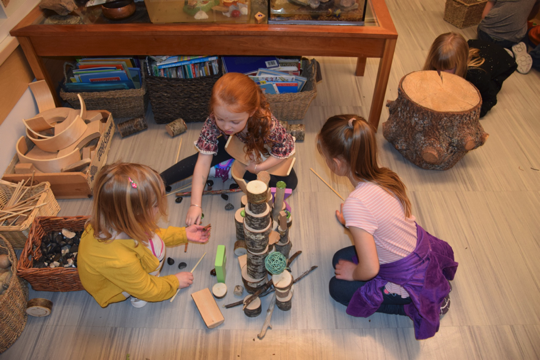
Language Play
Language play promotes:
A sense of belonging, speaking to be understood, emergent literacy skills, vocabulary, risk taking, oral fluency, listening for understanding.
When children play with words, rhymes, verses and songs that they make up or change, they build language capacity. Children learn about the sounds of language and how meaning is made when they tell and dramatize stories. Language play develops children’s inner voice and gives them a greater understanding of their place in the world. Young children are fascinated by language, including foreign languages, especially when language is presented playfully in story, verse or song.
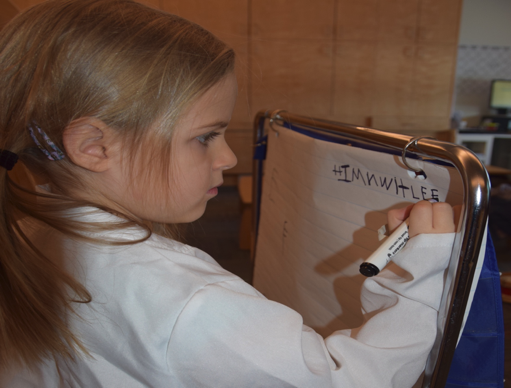
Large Motor Play
Large Motor play promotes:
Coordination, willingness to participate, spatial awareness, balance, muscle strength, physical fitness.
Children will show their natural desire to climb, run, slide, swing, jump and engage in every type of movement possible. Large-motor play is often associated with children having fun while developing coordination, balance, stamina and physical fitness. It has also been shown that children who actively engage in longer periods of daily large-motor play are more likely to experience cognitive, emotional and language growth.
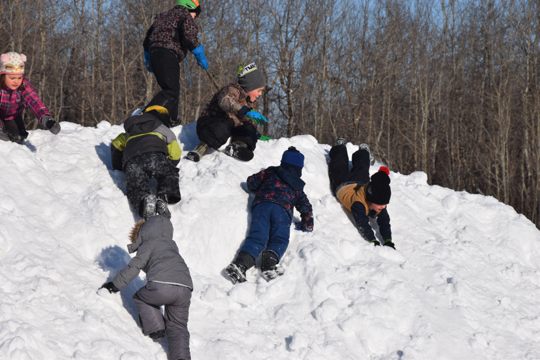
Risk-Taking Play
Risk-taking play promotes:
Knowing how to take risks enhancing new learning
Running down a steep hill, using sharp tools, hopping on stepping stones to cross a puddle or climbing a tree are examples of risk-taking play. Think of risk-taking play as play that involves children exploring heights, speed and new spaces; playing with tools; and using elements in their environment to climb on, under and over. When children test their abilities through risk-taking play, they learn how to master challenging environments, understand personal capabilities, develop confidence and gain independence.
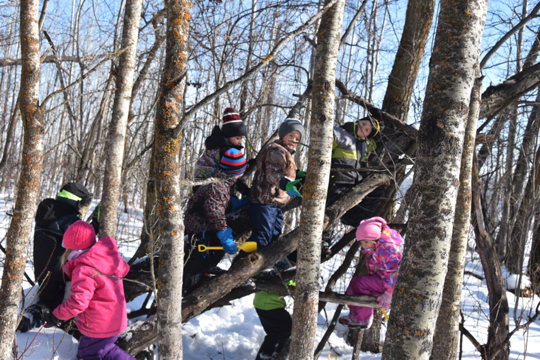
Rough and Tumble Play
Rough and Tumble play promotes:
Safe outlets for releasing energy, self-control, social competence, empathy, taking turns, improved communication skills, regulation of attention and persistence.
From a physical standpoint, rough and tumble play provides a natural outlet for children to release energy while exercising large muscles.The social learning during rough and tumble play improves social skills as children learn more about themselves and others. Rough and tumble requires children to show self-control and empathy toward others, cooperate, share, adapt their actions, take turns, resolve conflicts, develop leadership skills and self -regulate impulses and aggressive behaviour.

Rules-Based Play
Rules-based play promotes:
a sense of comfort and security, confidence, sense of belonging, social flexibility and adaptability, and purposeful use of materials for learning.
When children begin Kindergarten, they are capable of showing their developing ability to to make up their own rules. They are also at a stage that allows them to begin to show the social skill that comes with adapting rules to each play and learning situation.

Sensory Play
Sensory play promotes:
Mathematical and scientific reasoning, vocabulary development, cooperation, empathy and collaboration, and large and small muscle control.
Most children enjoy exploring different textures, sounds, and smells while playing with dirt, sand, mud, water and other materials. Not only do children enjoy learning about the properties of various substances, sensory play helps children develop cognitively, linguistically, socially and emotionally, physically and creatively. Learning with the senses leads to greater retention in all areas of a child’s development.
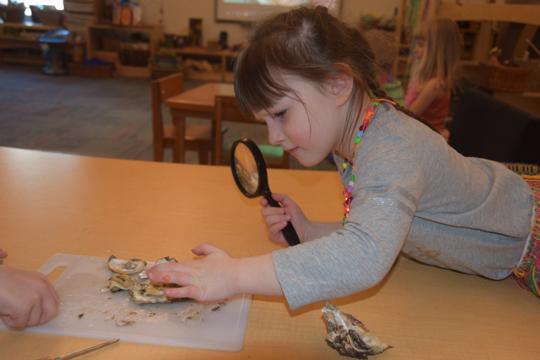
Make-Believe Play
Make-Believe play promotes:
A sense of comfort and security, coping strategies, willingness to participate, creative problem solving, social problem solving.
Make-believe play is an all-encompassing category of play that is rich with oral language, problem-solving and imagination use. Anything becomes possible during make-believe play. Ultimately, make-believe offers children a safe avenue to make sense of their world and to learn how to cope with new, scary or challenging experiences.
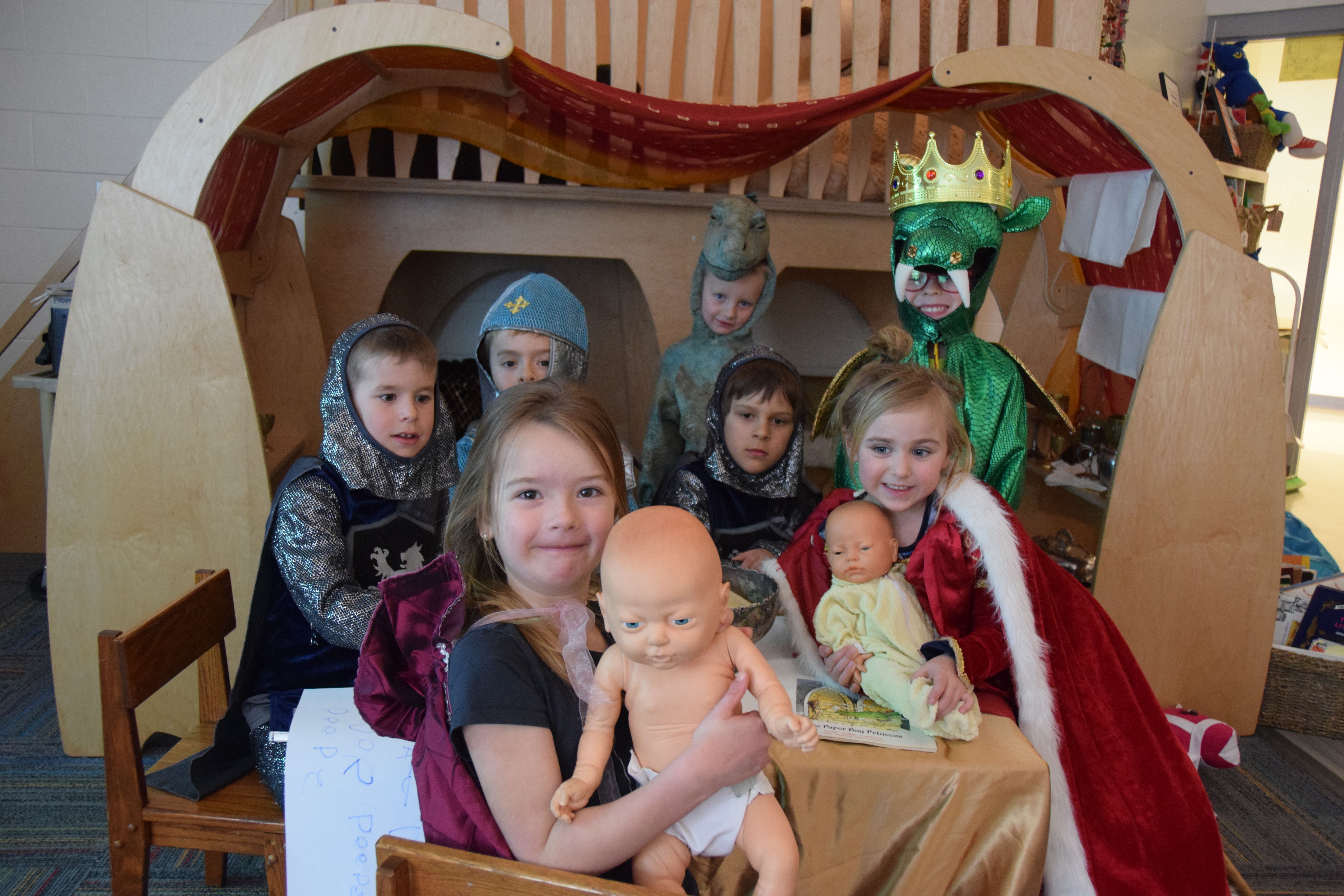
Small Motor play
Small-motor play promotes:
Hand-eye coordination, visual tracking, control of mouth and lips to form words, comprehension (connecting actions to words, cause and effect)
Small-motor play involves the careful and precise control of small muscles in the hands, feet, fingers and toes. Playful activities that encourage children to experiment and challenge use of small muscles has impact beyond the domain of physical development and it plays an important role in helping children begin to make sense of their world.
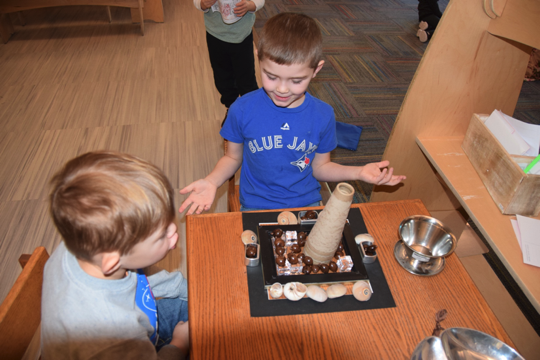
Mastery Play
Mastery play promotes:
Competence in doing new things, confidence, willingness to take risks, independence and mindfulness,
When children are stimulated and challenged by learning something new they can become fixated on activities associated with what they are learning. When a child repeats actions to solve a problem, it is “mastery play.”
In self-selected mastery play, the child explores solutions that will help them achieve success in a goal they have set for themselves.

Symbolic Play
Symbolic play promotes:
Independence, imaginative play, self-motivation, intrinsic learning, and creativity.
Symbolic play represents a developmental step in learning when there is no longer a need for specific objects to be used in play. This fun stage of development is where children delight in pretending. Symbolic play affords children opportunities to gain more control over their environment freeing them up to independently play and learn.
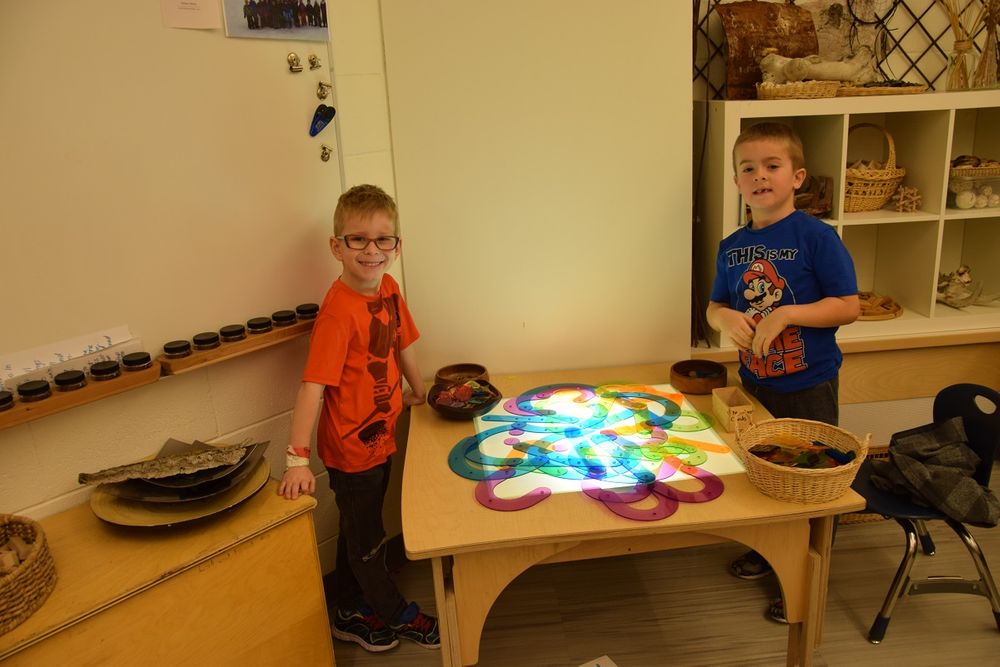
The Environment as the Third Teacher
"A Classroom that is functioning successfully as a third teacher will be responsive to the children's interests, provide opportunities for children to make their thinking visible and then foster further learning and engagement."
Susan Fraser
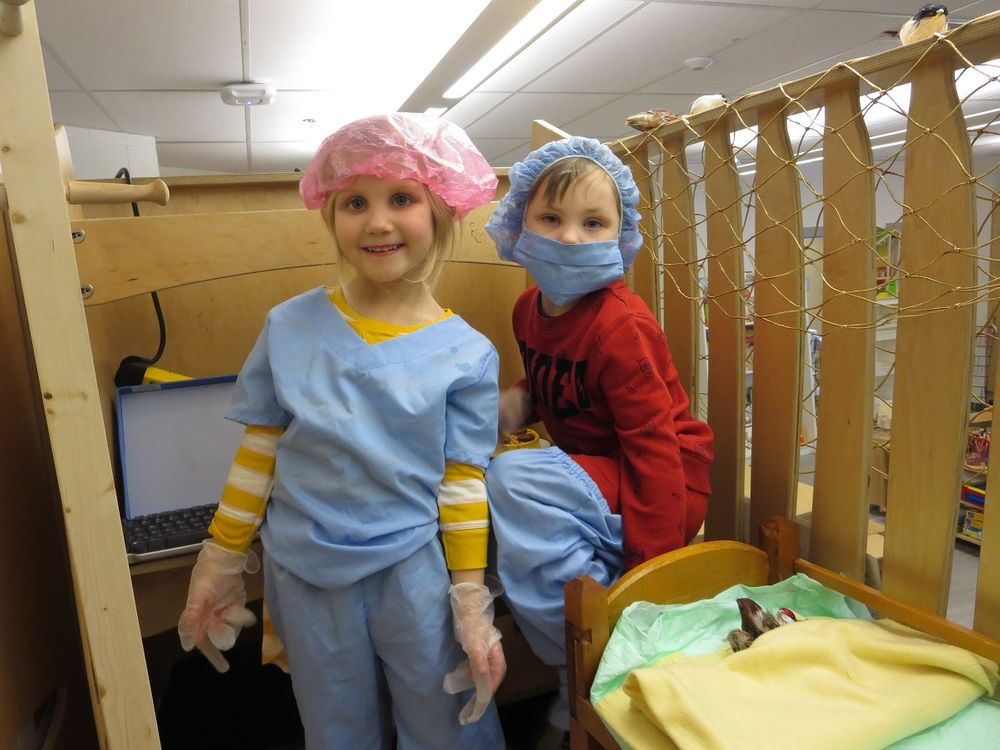
The Environment
The Classroom
The Maker Space
The Music Room
The Gymnasium
Nature :The Outdoor Classroom
The Classroom
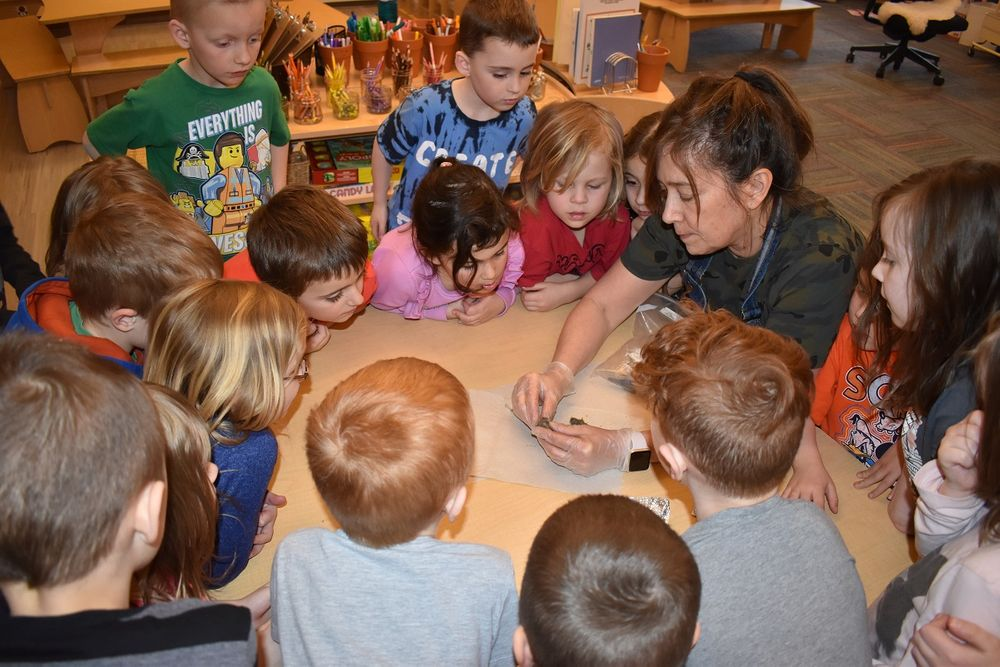
The Maker Space
When children have opportunities to engage freely with a range of engaging materials they use them to explore ideas, make meaning (Kind, 2010) and represent what they know or are coming to understand. Play with open-ended toys and materials fosters creativity and fosters “new connections between thoughts and objects that bring innovation and change, taking known elements and creating new connections” (Rinaldi, 2006, p.117).
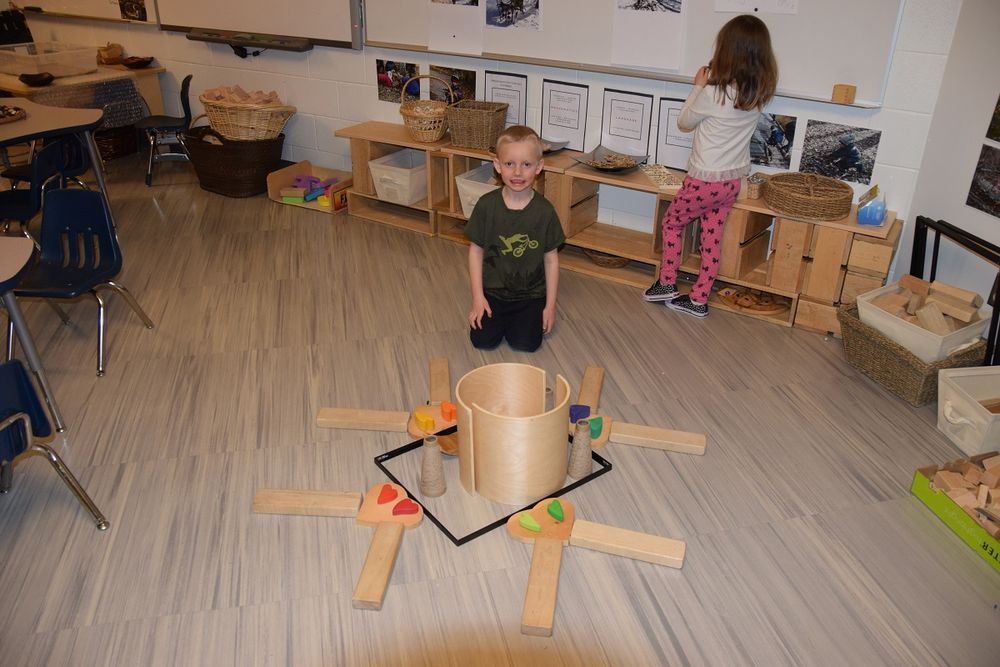
The Playground
Fultonvale has 2 large playgrounds.
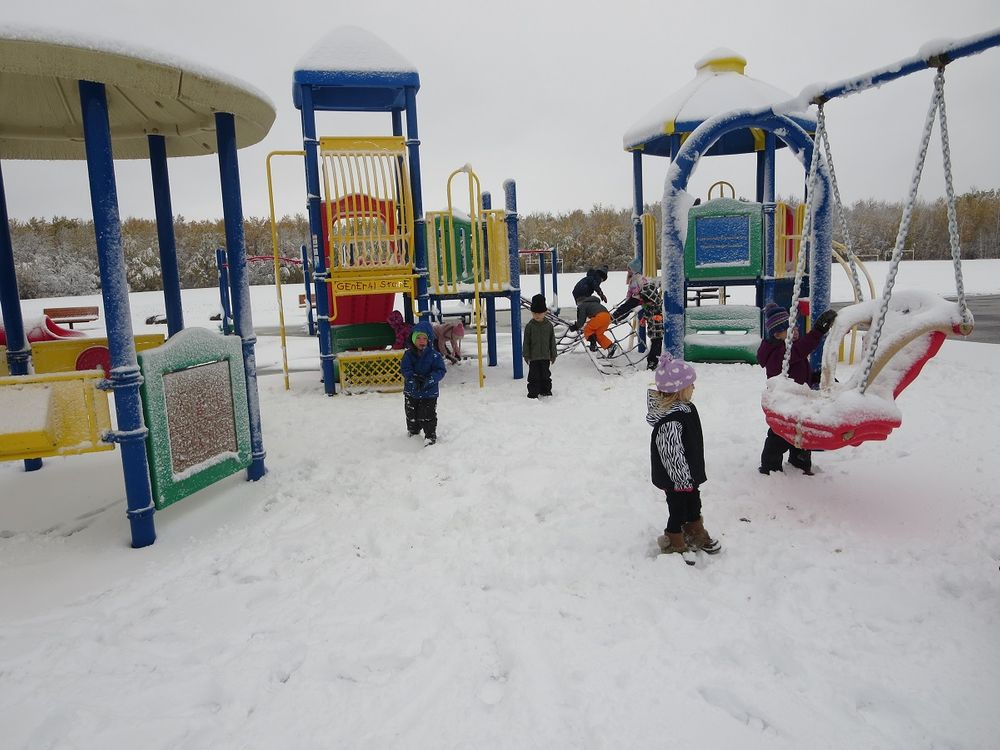
The Music Room
The children have the opportunity to engage in a music program with a music specialist. The children will dance, sing and have fun playing musical instruments.
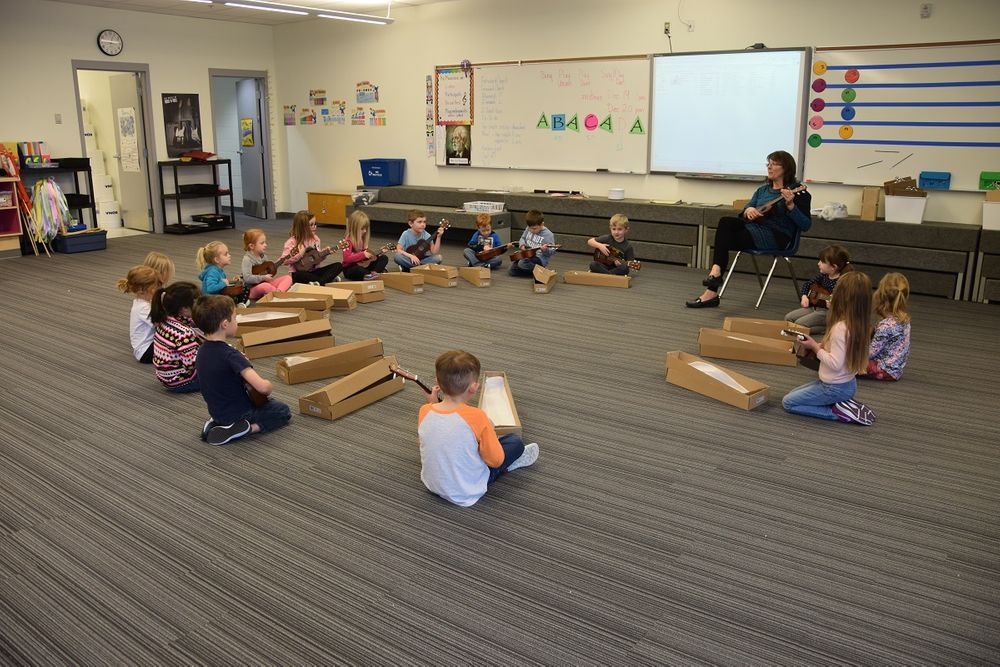
The Natural Environment
"The best classroom and the richest cupboard is roofed only by the sky."
Margarette McMillan (c1925)
The children will be given the opportunity to spend a great deal of time in the natural environment. We are very fortunate to have a wonderful forested area with an outdoor classroom situated beside the school.
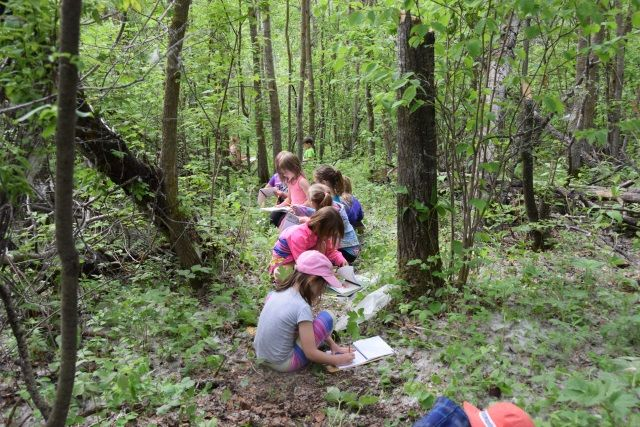
The 7 Learning Areas
Early Literacy
Early Numeracy
Citizenship and Identity
Environment and Community Awareness
Personal and Social Responsibility
Physical Skills and well-being
Creative Expression
Early Literacy
Language is the doorway to being able to share ideas and experiences, relate to others and make sense of the world. Your child will ask questions, give their thoughts on stories they hear and share their own exciting stories and experiences. They will read and print their name, group objects and play with words. As they discover how language works, the world opens up for them! For more about Early Literacy, refer to the Kindergarten Program Statement .
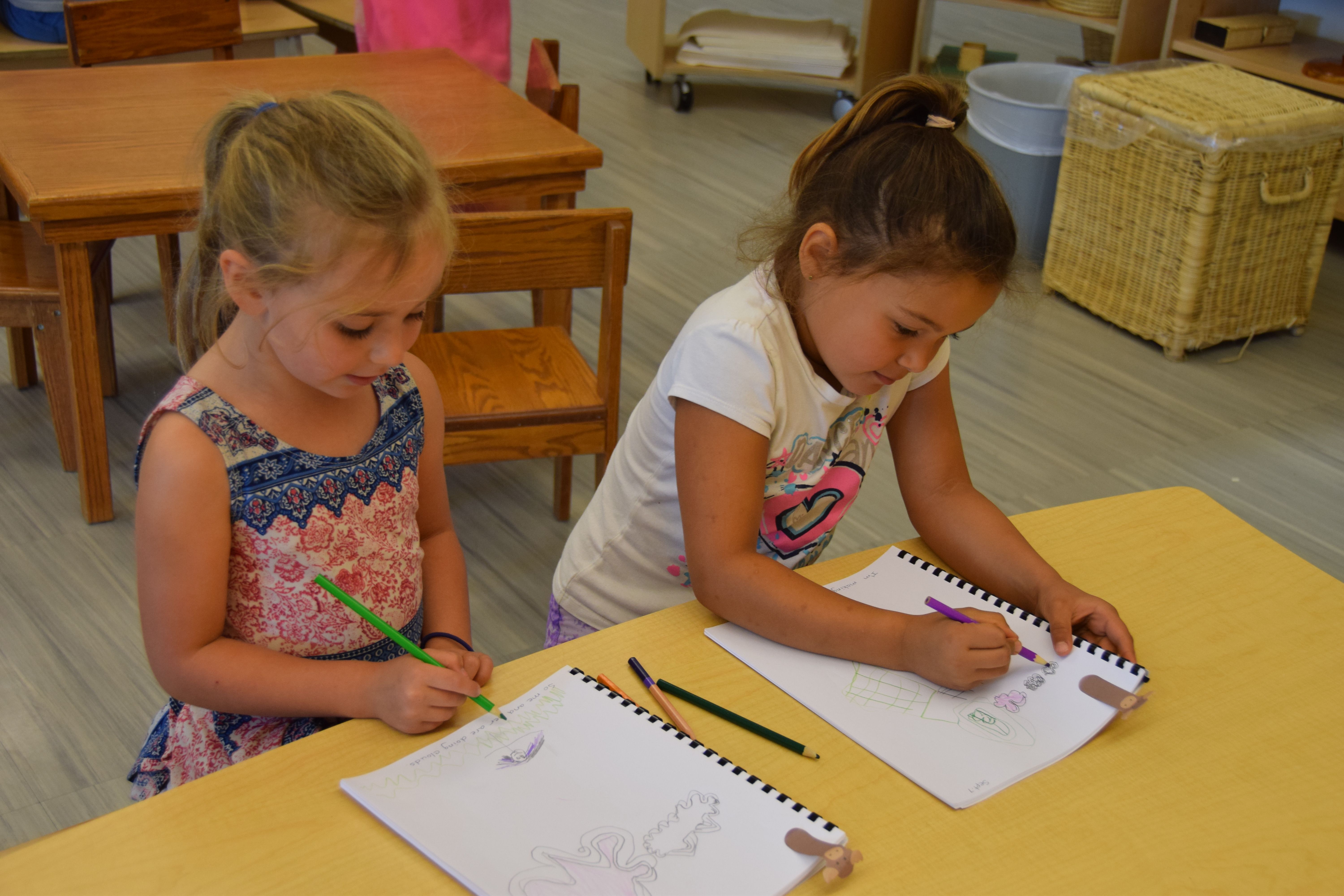
Early Numeracy
Kindergarten students will
- count to 10 forwards and backwards
- show, describe and compare quantities of things up to 10
- sort objects based on a single attribute
- recognize groups of 1–5 objects arranged in a familiar way
- play, read and use storytelling to explore and talk about how to solve problems
- connect numbers to everyday life
- recognize and create patterns, using objects, sounds and actions
For more about Kindergarten Mathematics, refer to the program of studies.
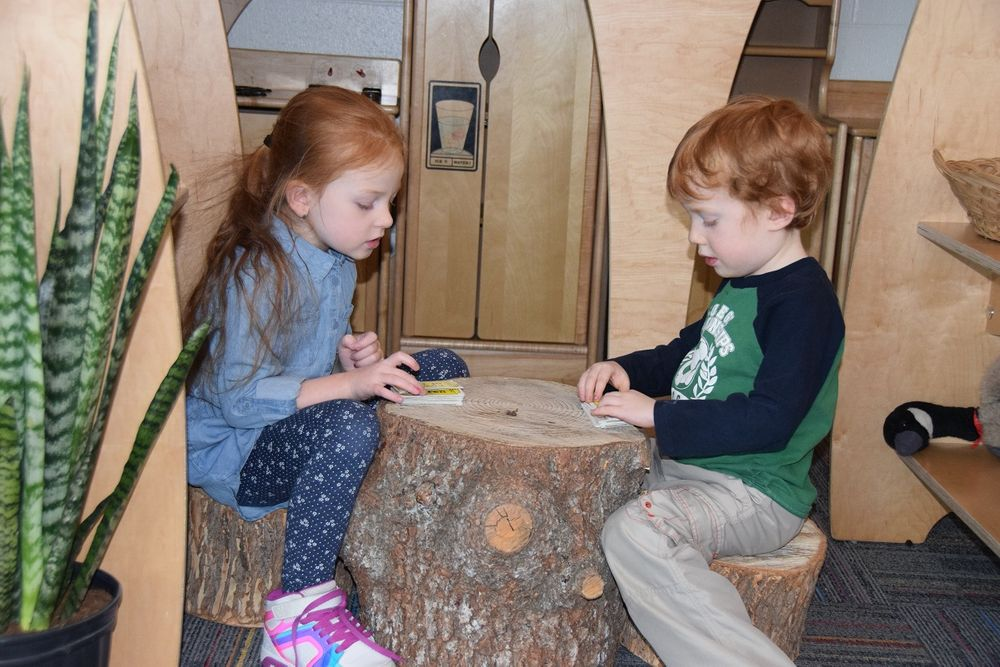
Citizenship and Identity
Kindergarten children explore who they are and how they fit into the world. Your child will become aware of their own uniqueness—their gifts, talents and interests—and discover the connections they have with others. They will develop a strong sense of identity, self-esteem and belonging as they share their gifts with others, express interest in others and interact sensitively and responsibly. For more about Citizenship and Identity, refer to the Kindergarten Program Statement .
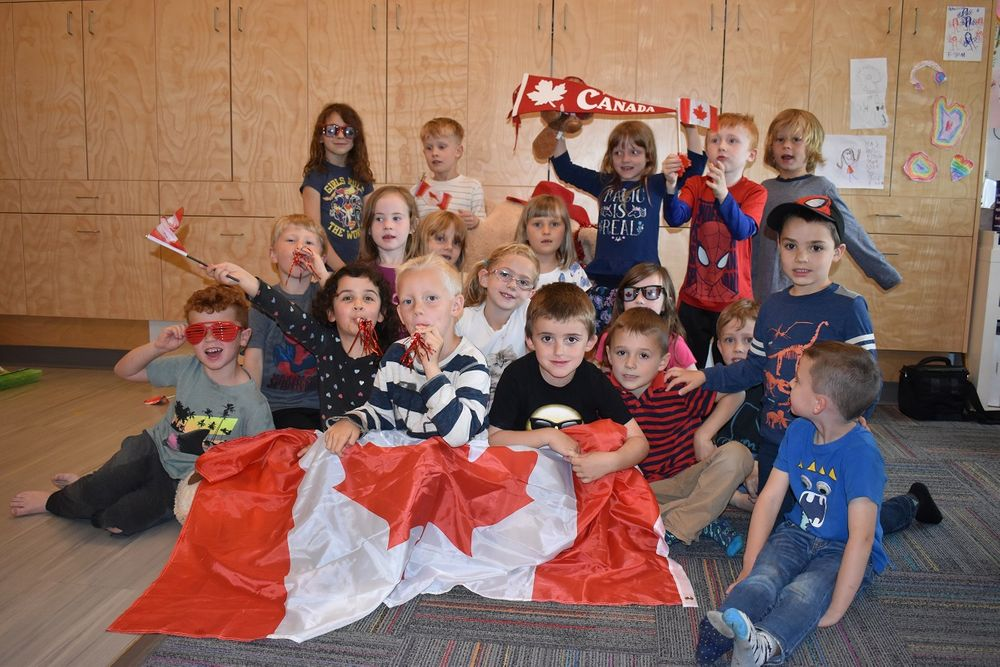
Personal and Social Responsibility
As your child makes friends, shares materials and attention, and takes turns, they will develop social skills they need for life. Kindergarten helps children see themselves as capable of learning, trying new things and taking risks. Rules and routines are learned and children become more independent, beginning to take responsibility for what they do at school. They develop ways to express feelings positively and to show respect and caring for others. Still curious? Refer to the Kindergarten Program Statement for more about Personal and Social Responsibility.
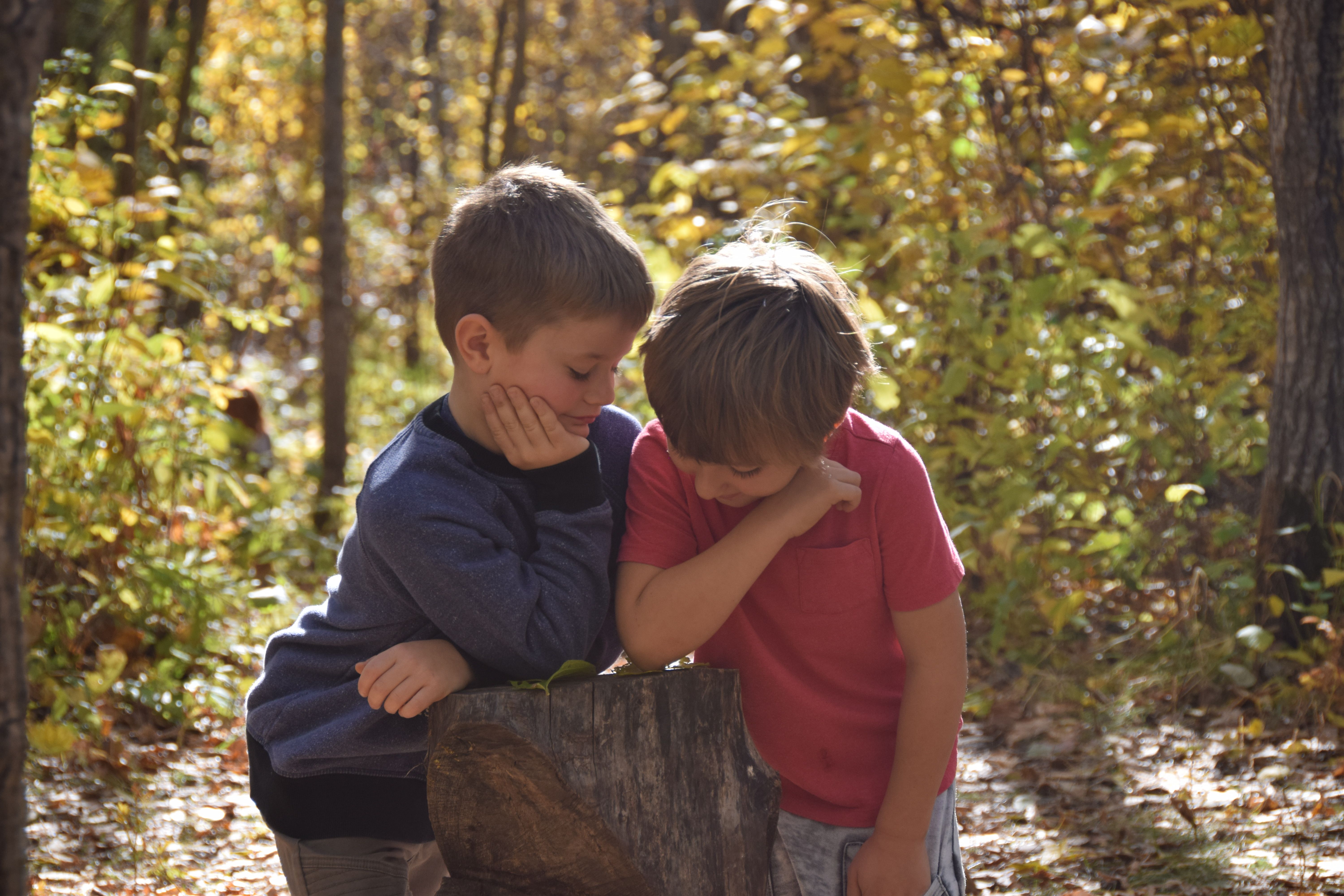
Physical Skills and Well Being
Healthy lifestyles begin in Kindergarten. Through movement, games and activities that use a variety of equipment, children develop coordination, balance and stability, as well as fine motor skills. They begin to connect the choices they make—what they eat, whether they will follow safety rules—with their health and well-being, and begin to understand that they are responsible for their bodies. For more about Physical Skills and Well-being, refer to the Kindergarten Program Statement .
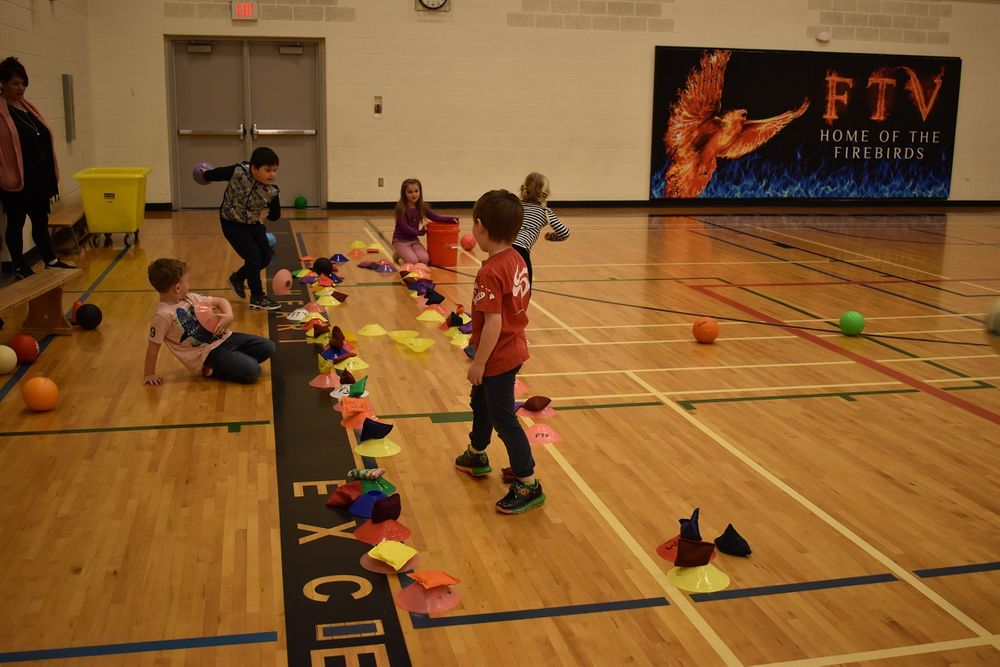
Environment and Community Awareness
Your child will begin to make sense of the environment and understand how they fit into and shape their world. They will see similarities and differences between things and discover how one action can cause another. Using their senses, they will identify shapes, symbols and sounds; recognize animals; and see seasonal changes. Building structures with various materials, and using technology, they will impact the environment and see the results. For more about Environment and Community Awareness, refer to the Kindergarten Program Statement .
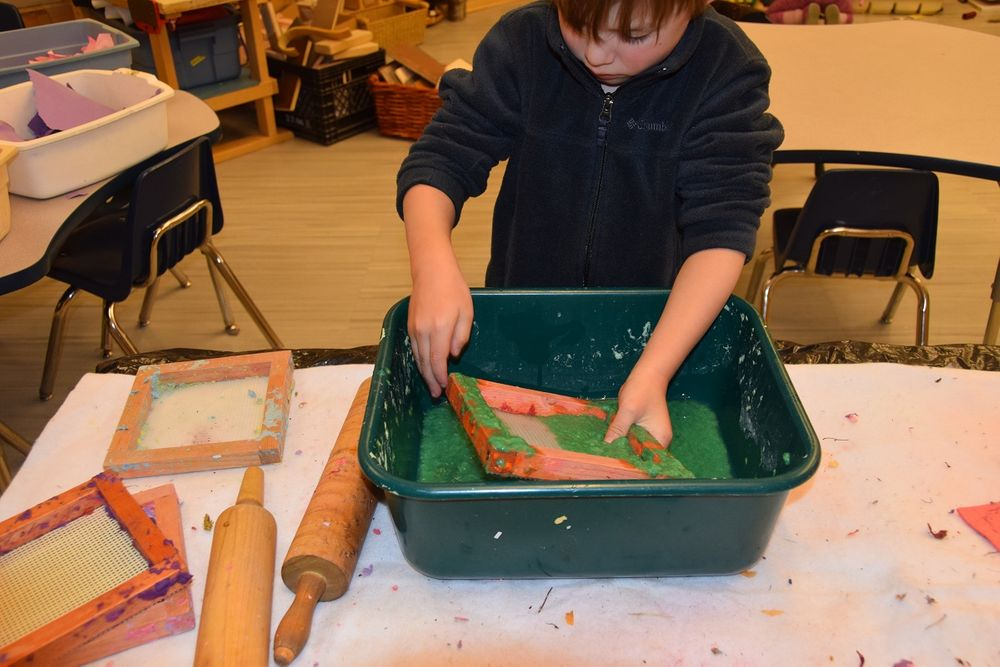
Creative Expression
Ideas and feelings are shared in many ways. Kindergarten children explore drama, art, music and dance to express themselves and to shape the world with their vibrant imaginations. By listening to, creating and moving to music; looking at, creating and responding to visual art; and pretending to be someone else in a dramatic play, your child will become more self-aware and self-confident and begin to appreciate the connections that the fine arts create between individuals and the world. For more about Creative Expression, refer to the Kindergarten Program Statement .
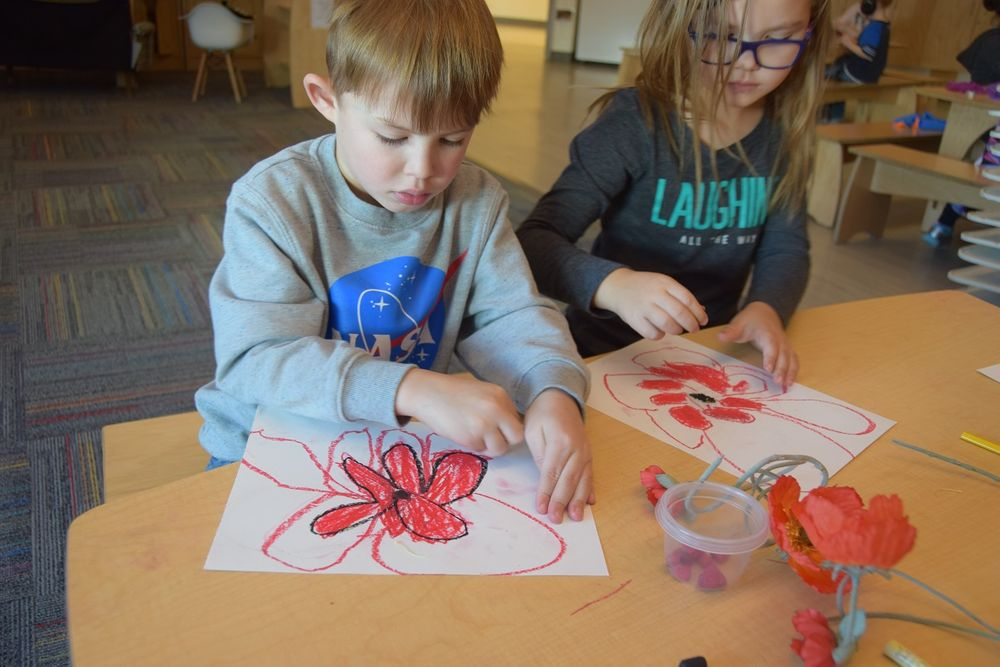
A Day in the life of Kindergarten
Children arrive and play at small park
- Morning Sharing Circle
- Snack
- Recess
- Playful Centers (Children work in small groups at rotating centers)
- Music
- Gym
- Lunch
- Recess
- Afternoon Sharing Circle
- Wonder Time ( In class or out in the natural area)
- Dismissal
- Children are brought to the buses before the other school students.
- Children that are being picked up. Park and meet Mrs. Kitson at the end of the sidewalk closest to the arena.

That's All Folks
See You in 2021!
